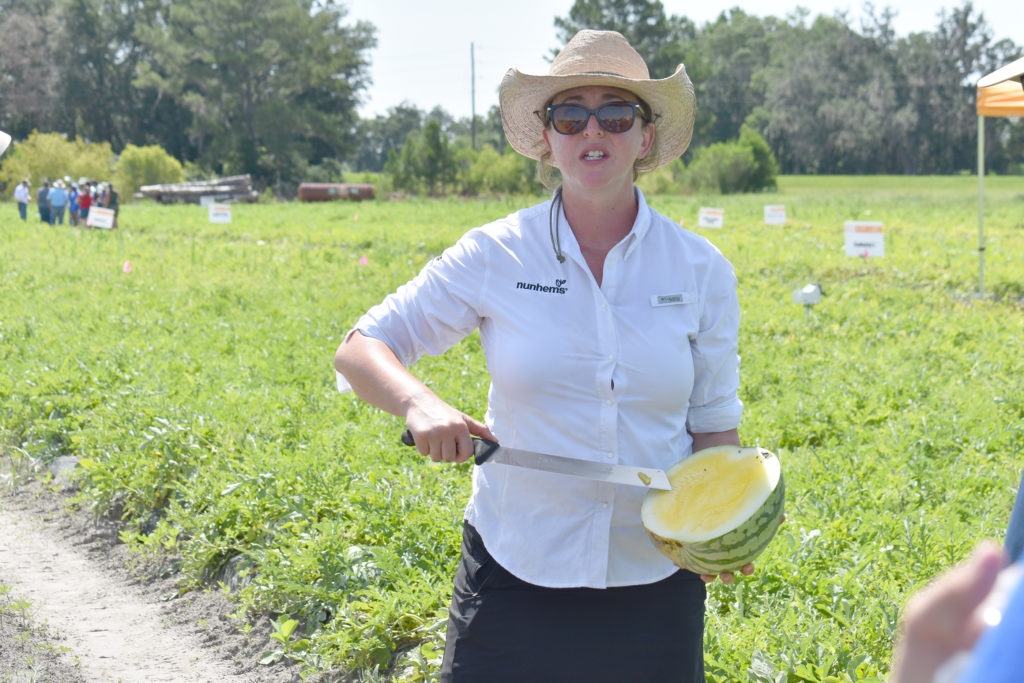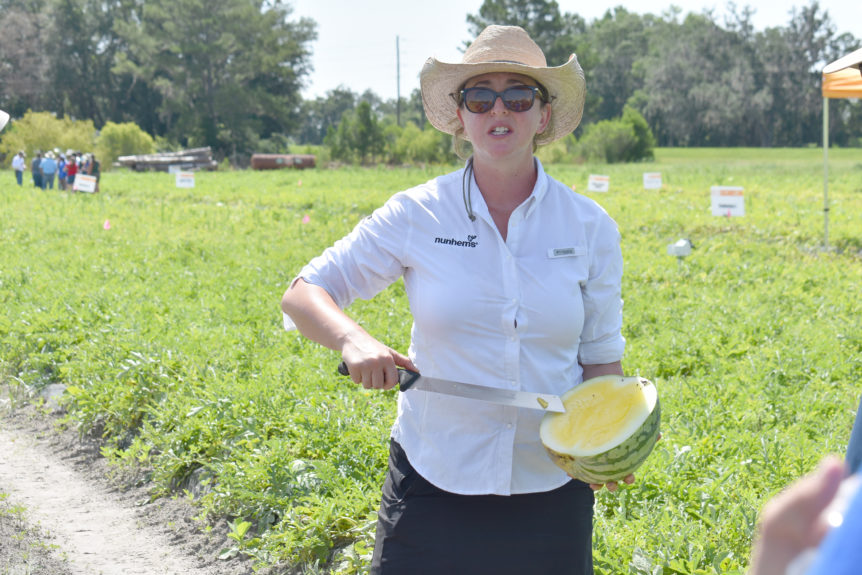
By Clint Thompson
Watermelons encounter their share of diseases in the Southeast. BASF/Nunhems is hoping to help producers overcome some of those diseases, especially fusarium wilt.
In conjunction with the University of Florida Institute of Food and Agricultural Sciences, BASF/Nunhems hosted its North Florida Watermelon Variety Showcase in Lake Butler, Florida, last week.
Ruhiyyih Dyrdahl-Young, Nunhems area sales manager for the Southeast, discussed the importance of researching varieties with disease resistance.
“Our breeding efforts are definitely global, but here in the Americas – North America, Central America, South America – we are very focused on trying to find disease resistance. Farmers here in Florida battle fusarium. They battle downy (mildew). They battle powdery mildew. They have all these different viruses that are vectored by different piercing and sucking insects,” Dyrdahl-Young said. “Disease, in particular fusarium, really is something we’re hyper focused on.”
Under the Research Spotlight
During the field day, she highlighted multiple commercial and pre-commercial varieties that are currently under the research spotlight.
“We have a whole team of breeders that are screening wild type germplasm to find novel sources of resistance; mark those with molecular markers and then try to breed that into our commercially viable hybrids,” she said.
“With a lot of vegetable crops, we don’t have GMs, genetically modified traits and watermelons, it’s the same deal. What a lot of farmers do is take a multi-pronged approach and they take a program approach. The foundation of that is of course selecting a variety but also pairing that with the right chemistries. The other tools that growers have in their toolbelts is to get on ground that hasn’t had watermelons on it in a long rotation.”
The site of last week’s field day belongs to the Dukes Family Farm. The watermelon crop was being grown on what was previously pasture land for 15 to 20 years.
“That’s not a situation that every farmer is in,” she noted. “Really the disease resistance, proper chemicals and having a smart fertilizer and irrigation plan really are the soundest tools they have to bring a good crop to the market.”










